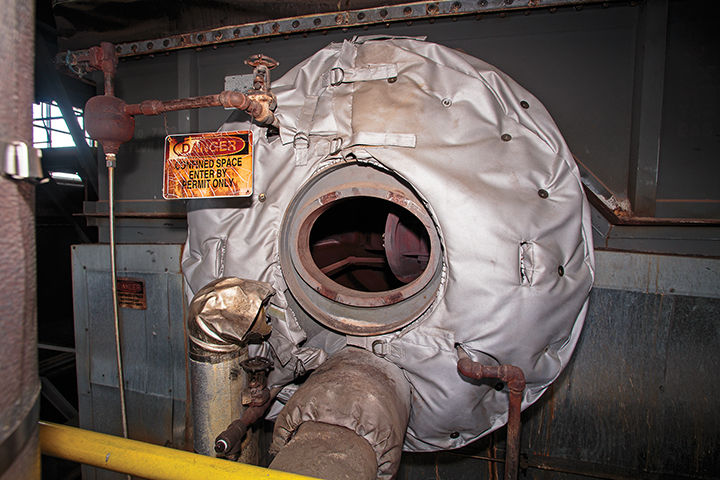
The power plant off of Route 1 supplies power to this university. It is contracted through GDF Suez.
Air conditioning is a commodity people appreciate during the hot summer months, but it also requires energy and resources, creating a huge drain on the electrical system.
And although this university’s power plant uses a more sustainable method of producing energy for the campus, it is difficult to reconcile sustainability and economic goals, said Jack Baker, Facilities Management executive director of operations and maintenance.
“You need air conditioning when it’s the hottest, and when it’s the hottest, you’re using the most electricity,” he said. “During the summer, when your peak load is … all that air conditioning is requiring a tremendous amount of electricity.”
However, the university’s contract with GDF Suez, which helps operate the university’s power plant, expires in 2019. GDF Suez plant manager Gregg Garbesi said the university has started exploring new avenues of energy production and assessing the overall efficiency of the current system.
The plant, which provides 50 to 90 percent of the campus’s energy depending on the time of year, currently uses a technique known as combined heat and power, or CHP, taking gas or fuel, burning it and creating steam to produce electricity and chilled water to provide air conditioning.
The Princeton Review named this university a top-20 green college last month for its commitment to the environment and use of sustainable practices.
John Fratangelo, Facilities Management facility performance assistant director, said that although CHP utilizes fossil fuels to generate the steam, it is much more efficient than solar and wind systems and much more sustainable than coal-fired systems.
“From my experience, we are doing the best thing for the environment by having a combined heat and power plant,” Fratangelo said. “It’s a proven technology, and I think it’s attributed to the fact that you produce less emissions and get more efficiency.”
Garbesi said he realizes this university has to balance the campus’s need for cost-efficient energy with meeting the standards outlined in the university’s climate action plan.
“They are going to try to find a way to continue to meet the needs they have to provide … as well as try to meet these other goals that some people might see as they’re in contention with one another, but there are probably ways they can work together to get to that point,” he said.
Baker said exploring alternative forms of energy like wind and solar is important, but those methods also have their flaws in terms of practicality and efficiency.
He said producing electricity as opposed to purchasing it from the grid is far less costly, environmentally and economically, and because CHP generates three products — steam, electricity and chilled water — it is far more efficient in terms of production.
“You’re using one energy source to basically produce three products, three products that would all require their own independent use of energy if we’re combining them.” Baker said. “From an efficiency perspective, a sustainability perspective, it saves utilities. That’s the bottom line.”
Garbesi said GDF Suez is also experimenting with different technologies so it can better meet the needs of its customers and comply with environmental regulations set forth by the university.
“We want to be in the business of providing people with their energy needs,” he said. “There are a lot of creative ways the university can partner with companies to meet their goals.”
Fratangelo said it is difficult to reconcile all these needs, especially with high demand for energy.
“The less [energy] they use, the less we have to make,” he said. “We have to always keep those other things in mind as far as making decisions, how we reduce greenhouse gases and how we maintain our renewable commitments.”



